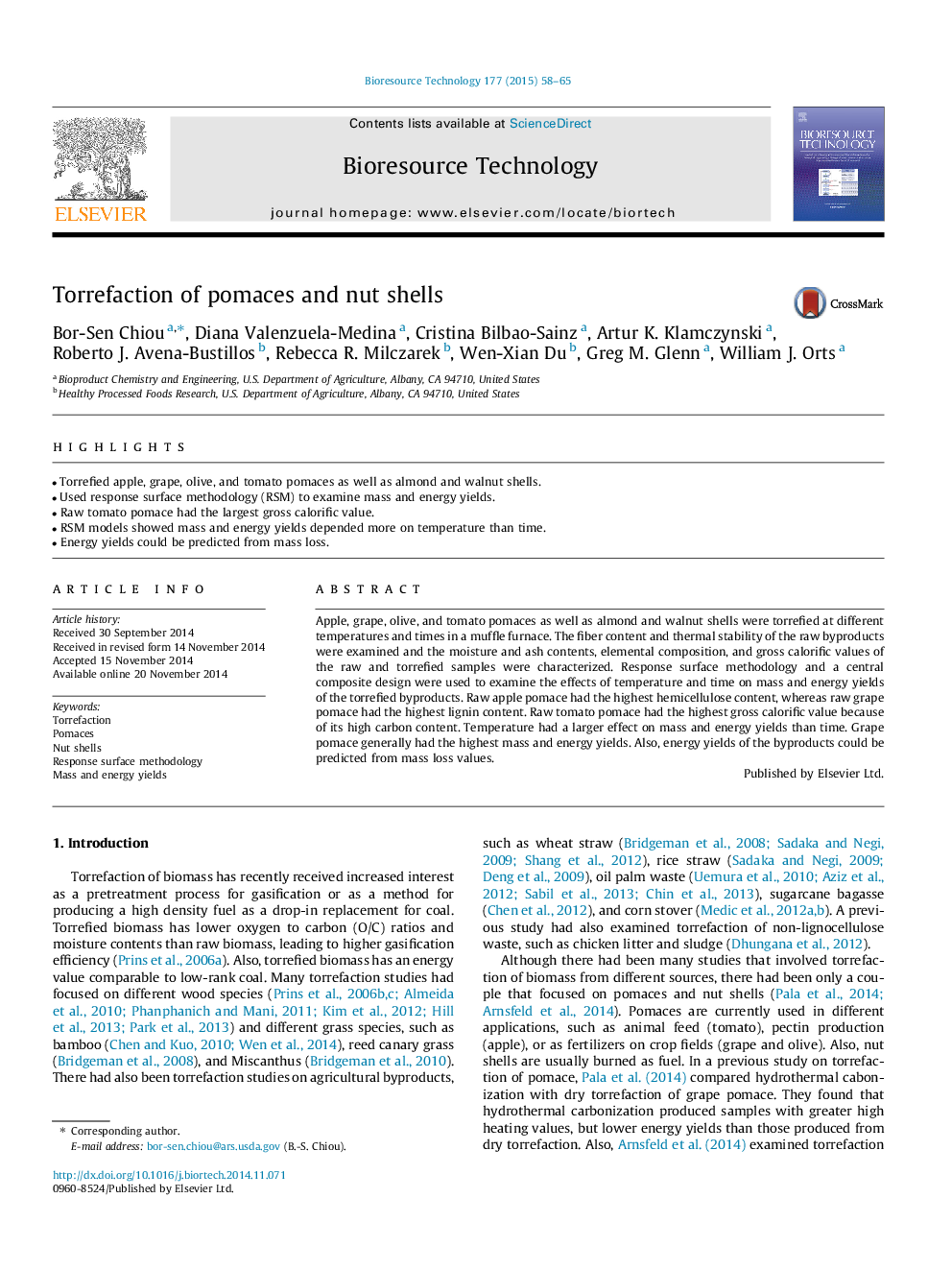| Article ID | Journal | Published Year | Pages | File Type |
|---|---|---|---|---|
| 680236 | Bioresource Technology | 2015 | 8 Pages |
•Torrefied apple, grape, olive, and tomato pomaces as well as almond and walnut shells.•Used response surface methodology (RSM) to examine mass and energy yields.•Raw tomato pomace had the largest gross calorific value.•RSM models showed mass and energy yields depended more on temperature than time.•Energy yields could be predicted from mass loss.
Apple, grape, olive, and tomato pomaces as well as almond and walnut shells were torrefied at different temperatures and times in a muffle furnace. The fiber content and thermal stability of the raw byproducts were examined and the moisture and ash contents, elemental composition, and gross calorific values of the raw and torrefied samples were characterized. Response surface methodology and a central composite design were used to examine the effects of temperature and time on mass and energy yields of the torrefied byproducts. Raw apple pomace had the highest hemicellulose content, whereas raw grape pomace had the highest lignin content. Raw tomato pomace had the highest gross calorific value because of its high carbon content. Temperature had a larger effect on mass and energy yields than time. Grape pomace generally had the highest mass and energy yields. Also, energy yields of the byproducts could be predicted from mass loss values.
